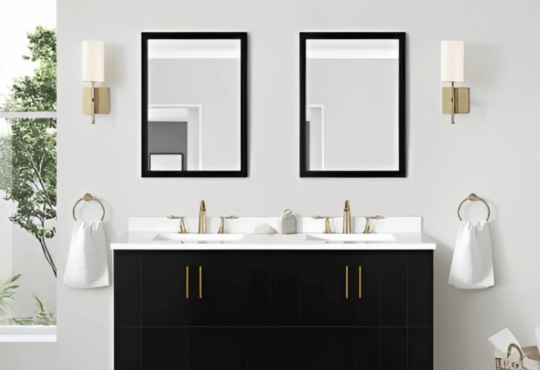
Design the Bathroom :The bathroom is one of the most crucial and personal spaces in any home. It’s where we start and end our day, offering moments of solitude and self-care. A well-designed bathroom not only enhances the aesthetics of your home but also significantly contributes to your daily comfort and functionality. Whether you are planning to renovate an existing bathroom or designing one from scratch, it’s essential to pay careful attention to the details. In this article, we will explore some important tips to help you design the perfect bathroom.
Designing the perfect bathroom involves a combination of aesthetics, functionality, and practicality. By carefully considering your needs, budget, and the tips outlined in this article, you can create a bathroom that is not only beautiful but also a joy to use. Whether you’re planning a complete renovation or a minor update, remember that a well-designed bathroom can add significant value to your home and improve your daily quality of life.

1.Define Your Needs and Goals
Before you start any design project, it’s vital to determine your specific needs and goals for the bathroom. Consider the number of people who will be using it, their age, any special requirements, and the purpose of the bathroom. Are you designing a master bathroom, a family bathroom, or a guest bathroom? Understanding your needs will guide your design decisions.

2.Set a Realistic Budget
Designing a bathroom can be costly, so it’s crucial to establish a realistic budget from the beginning. Take into account the cost of materials, labor, fixtures, and any unexpected expenses. Setting a budget will help you prioritize your choices and prevent overspending.

3.Focus on Layout and Space Planning
The layout of your bathroom is fundamental to its functionality. Consider the placement of fixtures, such as the toilet, sink, shower, and bathtub. Ensure there is adequate space for movement and that the layout is convenient for daily use. Work with a professional designer or architect to optimize the available space effectively.

4.Choose the Right Materials
Selecting the right materials for your bathroom is essential for both aesthetics and durability. Tiles are a popular choice for bathroom walls and floors, and they come in various materials, including ceramic, porcelain, and natural stone. It’s important to choose materials that are water-resistant and easy to clean. Additionally, consider the color and texture of the materials to achieve the desired ambiance in your bathroom.
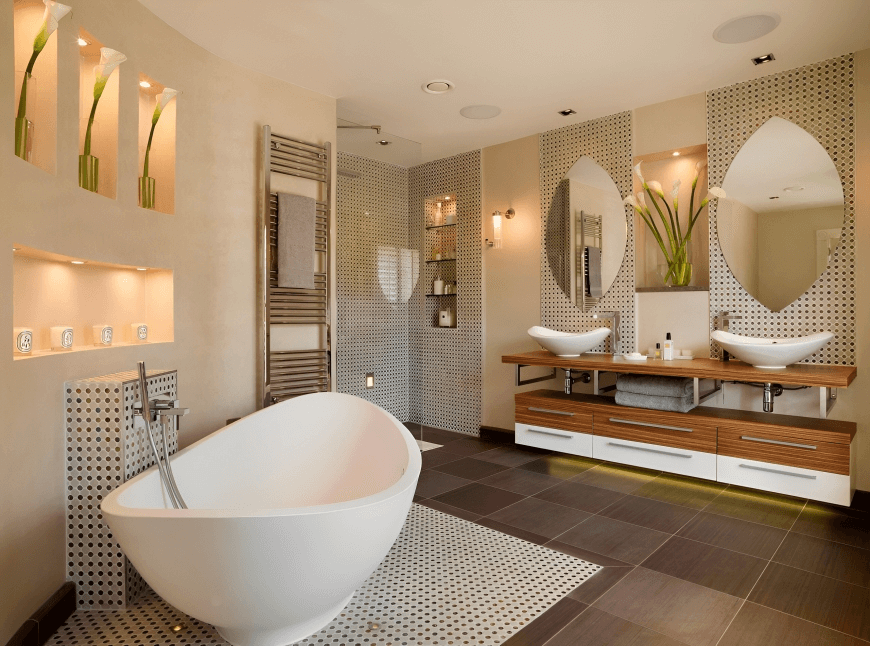
5.Pay Attention to Lighting
Good lighting can transform the atmosphere of your bathroom. Natural light is ideal, so if possible, incorporate windows or skylights. For artificial lighting, use a combination of ambient, task, and accent lighting to create a well-lit space. Dimmer switches can add flexibility to the lighting scheme, allowing you to adjust the brightness as needed.

6.Ventilation is Key
Proper ventilation is essential to prevent mold, mildew, and unpleasant odors in your bathroom. Ensure that your bathroom has an effective exhaust fan or window to allow moisture to escape. A well-ventilated bathroom is not only more pleasant but also preserves the structural integrity of the space.

7.Choose the Right Fixtures
Bathroom fixtures are not only functional but also decorative elements. Select fixtures that complement the style and aesthetics of your bathroom. Faucets, showerheads, and toilet designs vary greatly, so choose ones that suit your preferences. High-efficiency fixtures can also help you conserve water and energy.

8.Don’t Overlook Storage
Ample storage is essential to maintain a clutter-free and organized bathroom. Consider built-in storage solutions like cabinets, shelves, and niches. You can also use creative storage solutions such as baskets, hooks, and wall-mounted organizers to maximize space in a small bathroom.
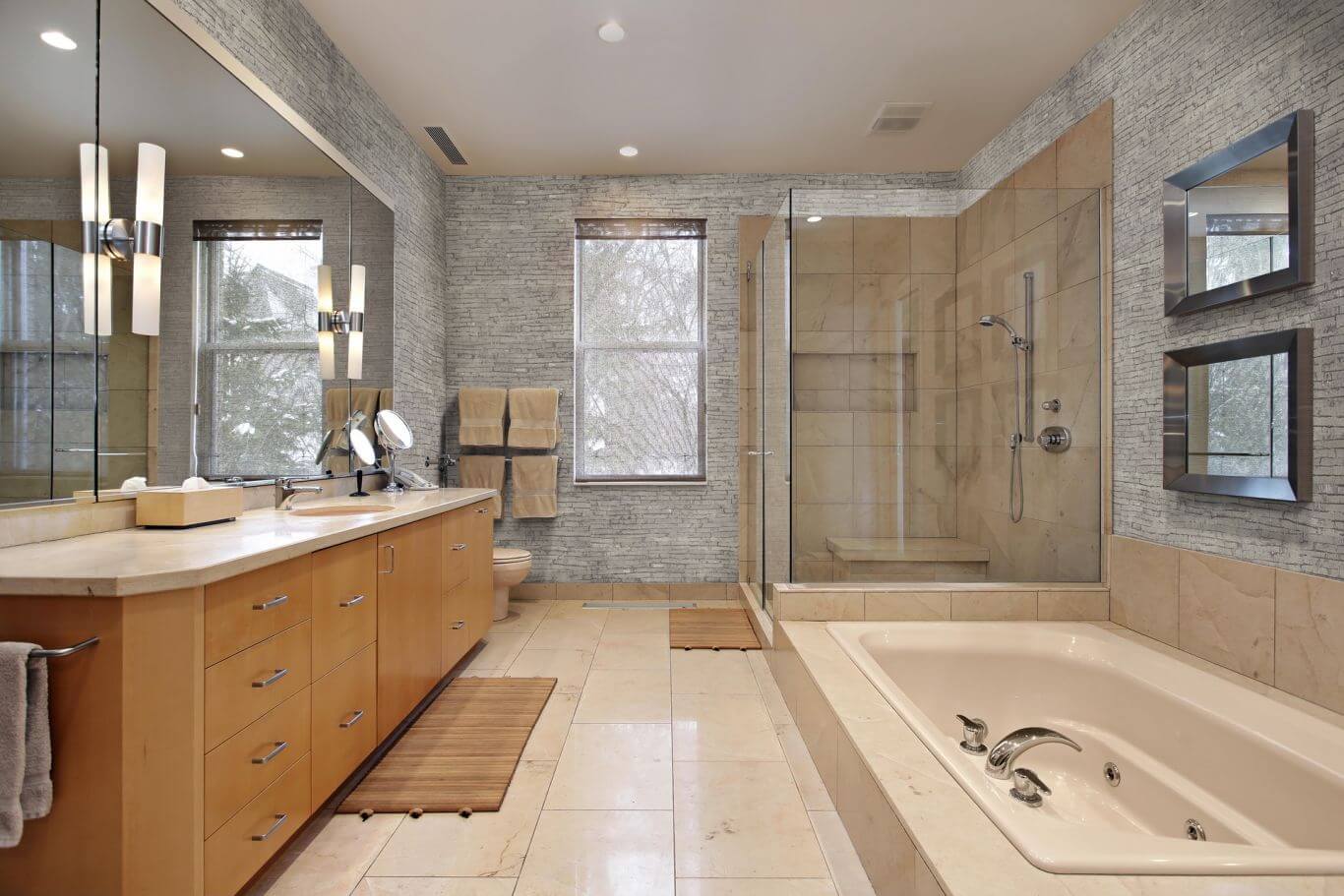
9.Prioritize Safety
Safety is especially important in bathrooms, which are prone to wet and slippery conditions. Install slip-resistant flooring, grab bars in the shower or near the toilet, and ensure that all electrical outlets are GFCI-protected. These measures will help prevent accidents and injuries.
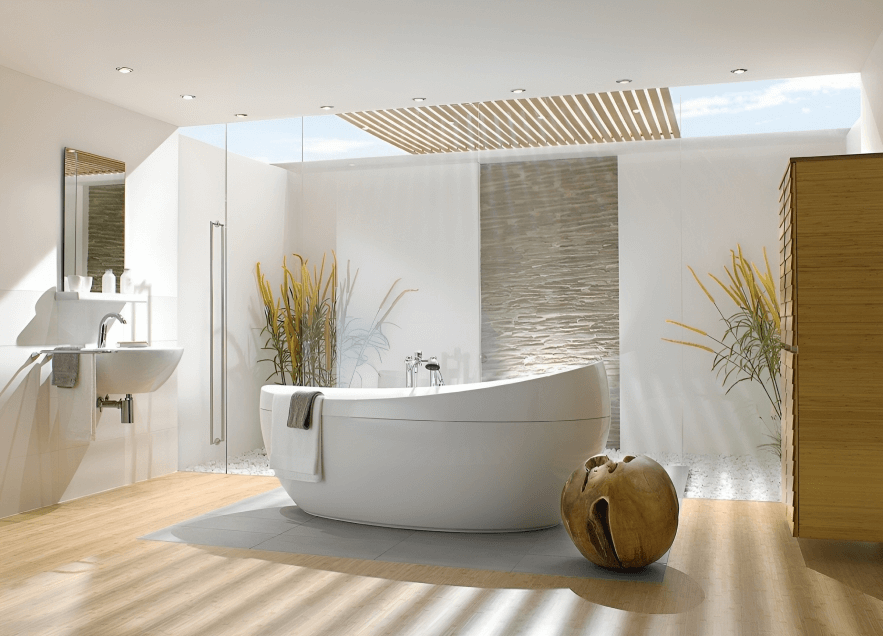
10.Keep the Future in Mind
As you design your bathroom, think about the long term. Consider how your needs might change over time and try to design a space that can accommodate these changes. Features like a curbless shower or a wider doorway can make your bathroom more accessible in the future.
Certainly, let’s delve deeper into each of the previously mentioned tips and explore additional considerations for designing the perfect bathroom.

11.Aesthetic Style and Color Scheme
When it comes to the aesthetic of your bathroom, it’s essential to decide on a style and color scheme that resonates with you. Popular bathroom styles include traditional, contemporary, rustic, industrial, and coastal, among others. Choose a style that complements the overall design of your home, creating a cohesive look. Additionally, the color scheme you select can significantly impact the mood of your bathroom. Soft and neutral colors create a serene and timeless atmosphere, while bold and vibrant colors can add excitement and personality.

12.Luxurious and Relaxing Features
To create a truly luxurious bathroom, consider adding features that contribute to relaxation and pampering. Features like a spa tub, a steam shower, heated flooring, and towel warmers can elevate your bathroom experience. While these features may increase your budget, they can make your daily routine feel like a spa retreat.

13.Eco-Friendly Design
Incorporating eco-friendly elements into your bathroom design not only benefits the environment but also saves you money in the long run. Use low-flow toilets and water-saving faucets to reduce water consumption. Choose energy-efficient lighting and ventilation systems to lower your energy bills. Recycled and sustainable materials are also excellent choices for an eco-conscious bathroom.

14.Personal Touches and Decor
Adding personal touches to your bathroom can make it feel more welcoming and unique. Display artwork, photographs, or decorative elements that reflect your personality. Use open shelving or built-in niches to showcase decorative items or plants. A well-chosen mirror can serve as both a functional and decorative piece, adding depth and style to your bathroom.

15.Accessibility and Universal Design
If your bathroom is intended for individuals with varying physical abilities or for aging in place, consider incorporating universal design principles. This may include features like wider doorways to accommodate wheelchairs, curbless showers, and adjustable-height fixtures. These adaptations ensure that the bathroom remains accessible to everyone.

16.Waterproofing and Proper Installation
One often overlooked aspect of bathroom design is waterproofing. Proper waterproofing is essential to prevent water damage and mold growth. Ensure that all wet areas, such as shower enclosures and tub surrounds, are properly waterproofed during construction or renovation. It’s advisable to hire a qualified contractor who is experienced in waterproofing to avoid future issues.

17.Plumbing and Electrical Considerations
The plumbing and electrical systems in your bathroom are critical for its functionality. Ensure that the plumbing layout is well-planned to avoid any issues with water pressure, drainage, or leaks. Properly grounded and GFCI-protected electrical outlets are crucial for safety. If you are adding new fixtures or relocating plumbing and electrical elements, consult with a professional to ensure that everything is up to code.
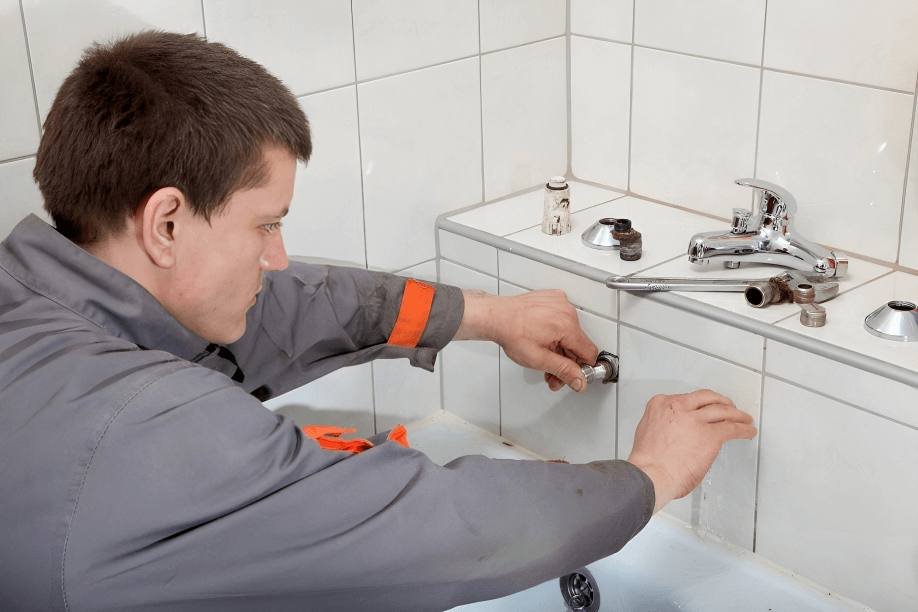
18.Regular Maintenance
Even the best-designed bathrooms require regular maintenance to remain in top condition. Develop a cleaning and maintenance routine that includes cleaning tiles, grout, and fixtures, as well as checking for any signs of wear and tear. Promptly address any issues to prevent costly repairs down the road.

19.Consult with Professionals
While you may have a clear vision for your bathroom design, it’s often wise to consult with professionals. An architect or interior designer can help you with layout and aesthetics, while a contractor or builder can ensure that your design is executed correctly. Professionals bring expertise and experience to the table, reducing the likelihood of errors.
conclusion
designing the perfect bathroom is a multifaceted process that requires careful planning, attention to detail, and a balance between aesthetics and functionality. By incorporating the tips and considerations mentioned above, you can create a bathroom that not only meets your immediate needs but also adds long-term value and comfort to your home. Remember that your bathroom is a personal space, and tailoring the design to your preferences and lifestyle is key to achieving your vision of the perfect bathroom.
Certainly, here are some frequently asked questions related to designing the perfect bathroom, along with their answers:
Q1: What’s the first step in designing a bathroom?
A1: The first step in designing a bathroom is to define your needs and goals. Consider who will be using the bathroom, its purpose, and any specific requirements. This initial assessment will guide your design decisions.
Q2: How do I establish a realistic budget for a bathroom design project?
A2: To set a realistic budget, research the cost of materials, labor, fixtures, and other expenses associated with your project. It’s also a good idea to consult with professionals for estimates. Ensure your budget is flexible to accommodate unexpected costs.
Q3: What are some key layout and space planning considerations for a bathroom?
A3: When planning your bathroom layout, consider the placement of fixtures, such as the toilet, sink, shower, and bathtub. Ensure there is ample space for movement and that the layout is convenient for daily use. Professional designers can help you optimize available space effectively.
Q4: What materials should I use for bathroom surfaces, and why is material selection important?
A4: Select materials that are water-resistant and easy to clean. Common choices include ceramic, porcelain, and natural stone for tiles. Material selection is important because it impacts both the aesthetics and durability of your bathroom.
Q5: How can I make the bathroom well-lit and comfortable?
A5: To achieve good lighting in your bathroom, consider incorporating natural light through windows or skylights. For artificial lighting, use a combination of ambient, task, and accent lighting. Dimmer switches offer flexibility to adjust brightness as needed.
Q6: Why is ventilation crucial for a bathroom, and how can I ensure proper ventilation?
A6: Proper ventilation is essential to prevent mold, mildew, and odors in your bathroom. You can ensure proper ventilation by installing an effective exhaust fan or ensuring there is a window that allows moisture to escape.
Q7: What should I consider when choosing bathroom fixtures?
A7: When choosing fixtures, consider both functionality and aesthetics. Faucets, showerheads, and toilet designs vary greatly, so select fixtures that match your preferences and the style of your bathroom. High-efficiency fixtures can help you conserve water and energy.
Q8: How can I maximize storage space in a bathroom?
A8: Maximize storage space in your bathroom with built-in solutions like cabinets, shelves, and niches. You can also use creative storage solutions like baskets, hooks, and wall-mounted organizers. An organized bathroom reduces clutter and maintains a tidy appearance.
Q9: What safety considerations are important in a bathroom design?
A9: Safety in the bathroom is critical. Ensure the flooring is slip-resistant, install grab bars in the shower and near the toilet, and use GFCI-protected electrical outlets to prevent accidents and injuries.
Q10: How can I make my bathroom design more future-proof?
A10: To future-proof your bathroom, consider features like a curbless shower or a wider doorway to accommodate changing needs over time. Design with flexibility in mind to adapt to your evolving lifestyle.
Q11: What are some popular bathroom styles, and how do I choose the right one for my home?
A11: Popular bathroom styles include traditional, contemporary, rustic, industrial, and coastal, among others. To choose the right style, consider what complements the overall design of your home and reflects your personal preferences.
Q12: How can I make my bathroom more eco-friendly?
A12: To make your bathroom eco-friendly, incorporate water-saving fixtures like low-flow toilets and faucets, choose energy-efficient lighting, and opt for recycled or sustainable materials. These choices reduce your environmental impact and save on utility costs.
Q13: What’s the importance of proper waterproofing in a bathroom?
A13: Proper waterproofing is crucial to prevent water damage and mold growth. Ensure that all wet areas, such as shower enclosures and tub surrounds, are correctly waterproofed during construction or renovation to maintain the integrity of your bathroom.
Q14: Why is it essential to consult with professionals during a bathroom design project?
A14: Professionals, such as architects, interior designers, and contractors, bring expertise and experience to ensure your design is executed correctly. They can also help you avoid common mistakes and adhere to building codes.
These frequently asked questions and their corresponding answers should provide valuable insights into the process of designing the perfect bathroom. Always remember to tailor your design to your specific needs and preferences for the best results.






